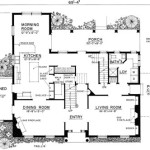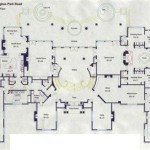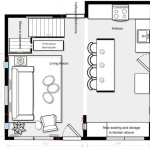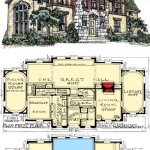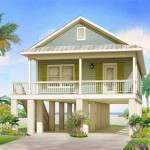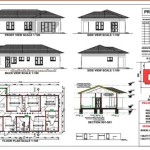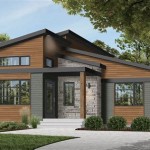Pole Barn Homes Floor Plans: A Comprehensive Guide
Pole barn homes, also known as post-frame homes, offer a unique blend of affordability, design flexibility, and durability. Their construction, based on a system of pressure-treated wood posts or poles anchored directly into the ground or secured to a concrete foundation, allows for large, open floor plans and cost-effective customization. This article will explore the key aspects of pole barn home floor plans, offering insights into design considerations and common layouts.
Key Considerations for Pole Barn Home Floor Plans
Careful planning is critical to maximizing the benefits of a pole barn home. Several factors influence the design and layout of these versatile structures:
- Budget: Like any home construction project, setting a realistic budget is paramount. Pole barn homes are generally more affordable than traditional stick-built homes, but costs can vary depending on size, finishes, and location.
- Lifestyle Needs: The floor plan should cater to the specific needs of the occupants. Consider the number of bedrooms and bathrooms required, whether a home office is necessary, and the desired flow between living spaces.
- Site Conditions: The topography and soil conditions of the building site will influence the foundation design and potential limitations on the floor plan.
- Local Building Codes: Adhering to local building codes and regulations is essential. These codes dictate specific requirements regarding structural integrity, energy efficiency, and accessibility.
- Future Expansion: Planning for potential future expansions, such as adding a garage or an extra bedroom, can save time and money down the line.
Popular Pole Barn Home Floor Plans
While pole barn homes offer immense design flexibility, certain floor plans have gained popularity due to their practicality and efficiency.
- Open Concept: This layout emphasizes a large, open space encompassing the living room, dining area, and kitchen. It promotes a sense of spaciousness and facilitates interaction between family members.
- Ranch Style: Single-story ranch-style pole barn homes are particularly popular for their accessibility and ease of maintenance. They typically feature a linear layout with bedrooms clustered on one side of the home.
- Loft Style: Incorporating a loft area can maximize vertical space and provide additional living areas or bedrooms. This design is particularly suitable for smaller footprints.
Maximizing Space and Functionality
Strategic planning can enhance the functionality and flow of a pole barn home floor plan.
- Natural Light: Large windows and strategically placed skylights can maximize natural light, reducing energy costs and creating a bright, inviting atmosphere.
- Storage Solutions: Incorporating ample storage space, such as built-in closets, shelving, and pantries, can help maintain an organized and clutter-free living environment.
- Traffic Flow: Careful consideration of traffic flow within the home can prevent bottlenecks and create a more comfortable living experience.
Working With a Designer
Engaging a qualified architect or designer specializing in pole barn homes is highly recommended. Their expertise can ensure that the floor plan meets structural requirements, maximizes efficiency, and reflects the homeowner's vision.
- Clear Communication: Clearly communicate your needs, budget, and desired aesthetic to the designer.
- Review and Revisions: Thoroughly review the initial design plans and request revisions as needed.
- Construction Expertise: Seek designers with experience in pole barn construction to ensure the feasibility and practicality of the plan.
Exploring Different Sizes
Pole barn homes can be designed in various sizes to accommodate different needs and budgets. From small, efficient starter homes to expansive multi-level dwellings, the possibilities are virtually limitless.
- Small Pole Barn Homes: Efficient designs maximizing space and minimizing wasted square footage.
- Medium Pole Barn Homes: Offer a balance between affordability and comfortable living space for families.
- Large Pole Barn Homes: Provide ample space for larger families or those desiring dedicated areas for hobbies and entertainment.
Incorporating Energy-Efficient Features
Designing with energy efficiency in mind can significantly reduce long-term operating costs and minimize environmental impact.
- Insulation: Proper insulation in walls, roofs, and floors is crucial for maintaining a comfortable temperature and reducing energy consumption.
- Energy-Efficient Windows and Doors: High-performance windows and doors can minimize heat transfer and improve overall energy efficiency.
- HVAC Systems: Choosing an appropriately sized and energy-efficient HVAC system is essential for optimal performance and cost savings.
Considering the Exterior
The exterior design of a pole barn home is just as important as the interior floor plan. A well-designed exterior enhances curb appeal and complements the surrounding environment.
- Siding Options: Various siding options, such as metal, wood, or vinyl, offer different aesthetic and durability characteristics.
- Roofing Materials: Choosing a durable and aesthetically pleasing roofing material, such as metal or asphalt shingles, is essential for long-term protection.
- Landscaping: Thoughtful landscaping can complement the home's design and create an inviting outdoor space.

Images Barn Homes Floor Plans Pole House Barndominium

Barndominium Floor Plans Pole Barn House And Metal Homes

35 X50 Barndominium Floor Plans House Pole Barn

Pole Barn Home Plans Design Cad Pro

Building A Pole Barn Home Kits Cost Floor Plans Designs

Barndominium Plans Stock And Custom Pictures Faqs Tips

Pole Barn Homes 101 How To Build Diy Or With Contractor

Floor Plans Archives Hansen Buildings

Barndominium Floor Plans Pole Barn House And Metal Homes Houses

Pole Barn Home Floor Plans Beehive Buildings

